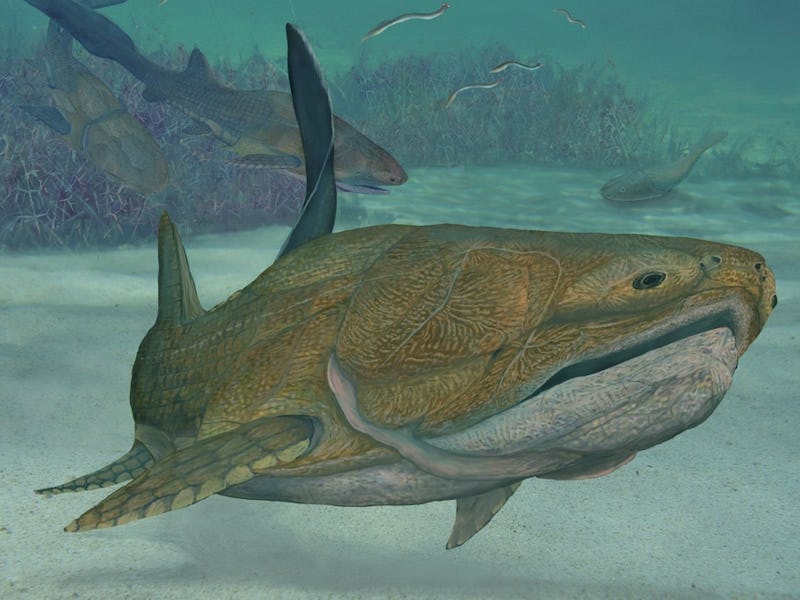Researchers Just Linked Your Jawbone to This Preshistoric Fish
Jaw structure can tell us a lot about how ancient fish were related.

A fossil bed in southwestern China is full of prehistoric fish that are changing the way scientists think about evolution.
A study, published Thursday in the journal Science, analyzes the jaws of two species of placoderms — ancient fish that had blade-like jaws and lived over 420 million years ago. Their jaws are made up of bones that the study’s authors argue are the evolutionary origin of modern vertebrate jaws.
There are three important components in your jaw:
- Your mandible (your lower jaw bone)
- Your maxilla (your upper jaw bones, just below your cheek bones)
- Your premaxilla (the bone between your maxilla, where your front teeth are).
Every vertebrate walking around with a jaw, whether it’s a human, a horse, or an anteater, all have these same structures, even though they can look totally different. “You have this basic architecture that’s very stable,” Per Ahlberg, an evolutionary biologist at Uppsala University in Sweden, tells Inverse. “It’s just that evolution played with the proportions.”
Until a few years ago, scientists thought cartilaginous fish, like sharks and rays, had a more primitive jaw structure than placoderms, and that bony fish had somehow evolved from them. “There wasn’t really an idea that there was a transition from placoderms to bony fish,” Ahlberg says. But the discovery of a fossilized fish known as Entelognathus, a few years ago, started to chip away at that view. Entelognathus looks like a typical placoderm, but its jaw looks a bit more like a bony fish’s or a modern vertebrate’s. “We had this animal showing this weird combo of bony fish and placoderms characteristics,” says Ahlberg, one of the study’s authors.
The discovery of another placoderm, called Qilinyu, from the same fossil bed, strengthens the evidence for a close relationship between bony fish and placoderms. Entelognathus and Qilinyu were contemporary cousins, and while they look different from one another, they are clearly intermediates between conventional placoderms and bony fish. Sharks and rays are actually an evolutionary offshoot.
“It’s filling a gap in the fossil record, and it’s an important one,” says Ahlberg, because until the discovery of Entelognathus and Qilinyu, we didn’t even know this gap existed. It looks like you can thank these two fish for your jawline.